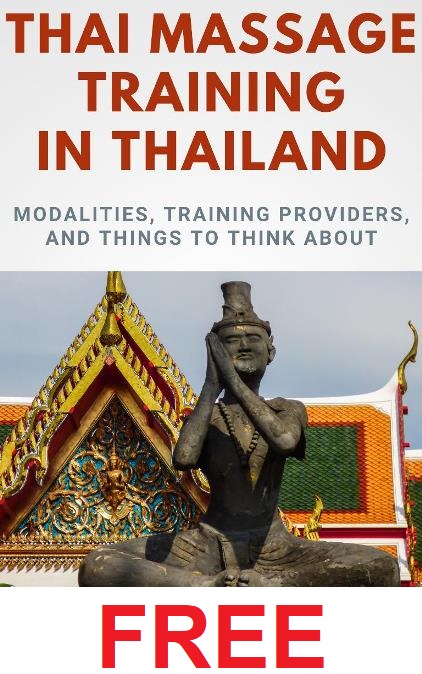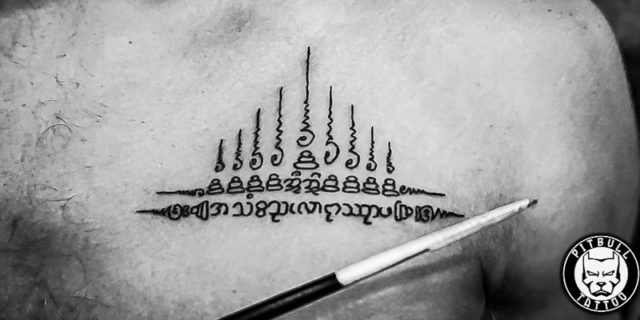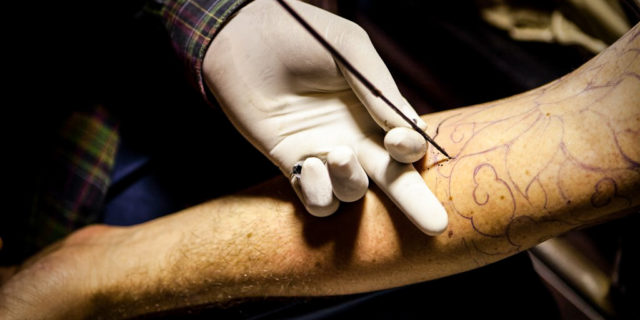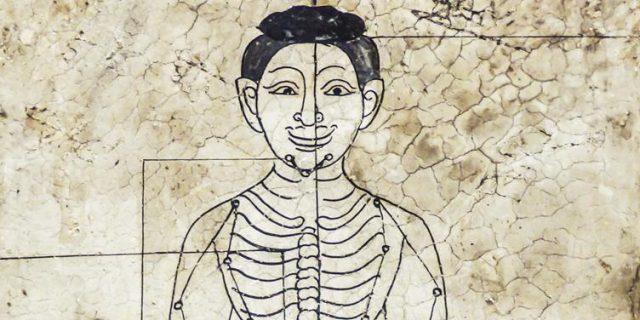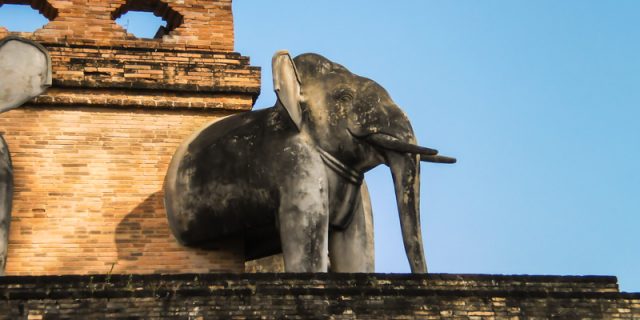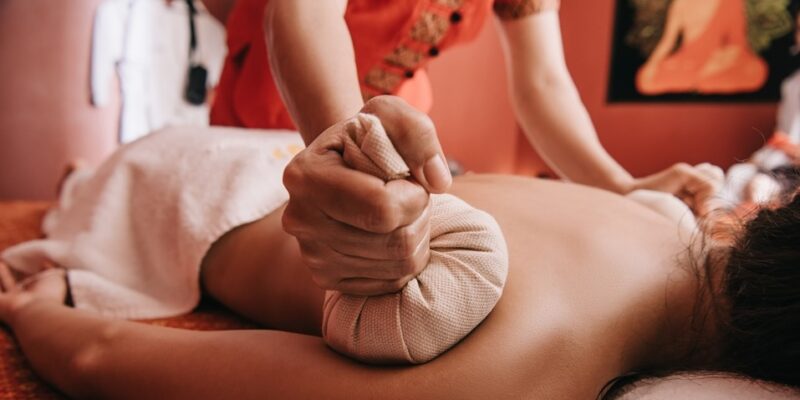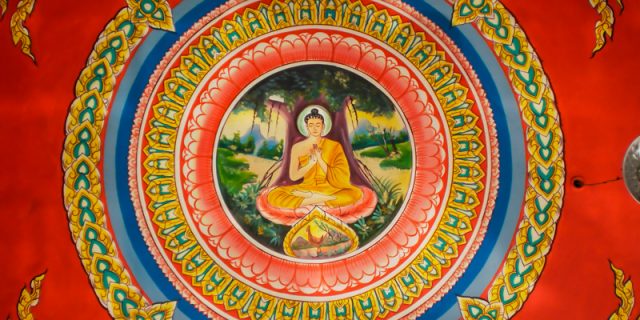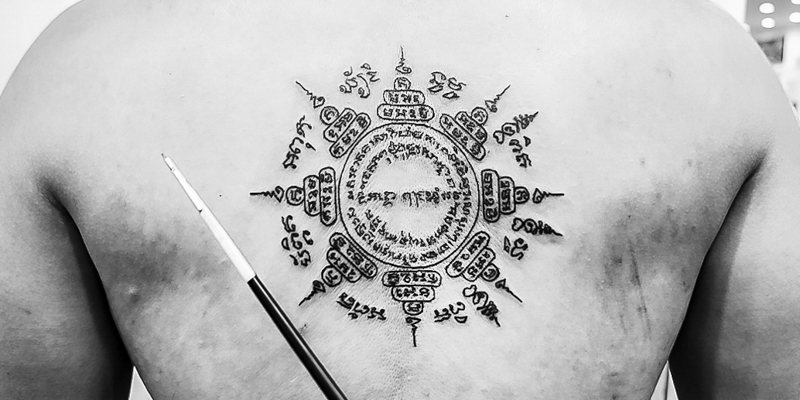
Thailand has a very rich and ancient culture, still much alive to this day. To preserve traditional knowledge and rituals on such a grand scale in this globalized world is no small feat, and perhaps it’s one of the reasons that Thailand is such a popular tourist destination.
A Little Background
Traditional Thai Tattoos, much like the Thai Amulets, are a very good example of Thai culture and its emblematic syncretism between Buddhist, Animist, Brahman, and Hindu beliefs.
Sacred or magic tattoos that are thought to offer protection or bring some kind of benefit or power for the recipient have been recorded in many countries of Southeast Asia over the centuries. There is no definite starting date for the beginning of this tradition, but it’s believed to be between one to two thousand years old.
In the Thai language Sak means “Tattoo” and Yant means “Yantra,” a sacred geometry design found in Dharmic religions. Apart from the beautiful patterns of the Yantras, there are also magical incantations or Mantras connected to Sak Yant, written in the Khmer version of Pali Sanskrit (called Khom).
Historically, Thai soldiers would get Sak Yant tattoos to give them power and make them invincible. This is very popular until today among Muay Thai fighters. The Tiger Sak Yant Tattoo design, specially, is very used because the tiger symbolizes strength, power and fearlessness — plus, it helps drive evil spirits away. All qualities desired by Thai boxing fighters, no doubt.
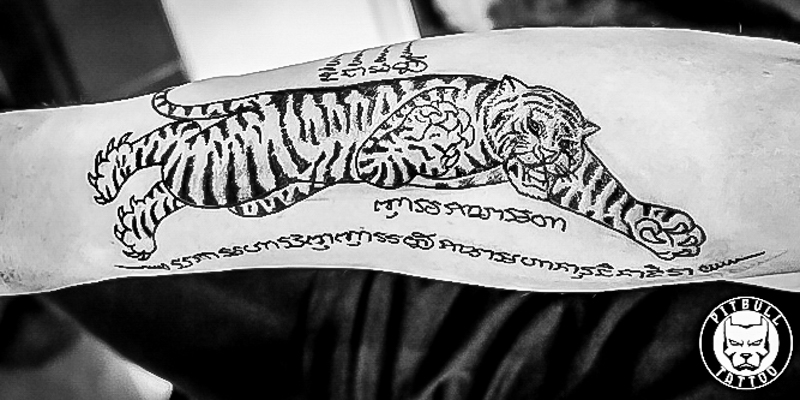
Protection and Good Fortune with Blessed Tattoos
One of the most popular designs and with a more broad protective efficiency — specially popular with tourists who don’t speak Thai and don’t know the tradition in depth to ask for something more specific or elaborate — is the Hah Taew Sak Yant Tattoo (Five Lines).

These are simply 5 vertical lines, written in Khom, and each line is a magical spell that protects or brings good luck to specific purposes, like protecting the place you live in, preventing unjust punishment, reversing bad horoscope constellations, protection against black magic, attracting success and fortune, and helping to gain charisma and attract the opposite sex, to name a few.
The tattoos have very strong religious and spiritual meaning, and are until today given by a monk or Ajarn (master), usually in a temple (called the Wat in Thailand). Although it is not a Buddhist tradition, many Buddhist monks practice it, or in any case, acknowledge its power.
If you do it in a temple with a monk, after the tattooing part is done there’s usually a blessing ceremony with chanting in the end. Plus, the monks never charge for the tattoos, but it is advised to bring donations — such as food, flowers, incense, petty cash, or simply a “donation bucket” — which contains a handful of useful products for the monks and can be bought almost anywhere.
Traditionally, the tattoo was carried out with a long bamboo rod, but nowadays it’s mostly done with a metal rod sharpened to a point. It’s usually faster to make and quicker to heal than normal tattoos — although many have said it is much more painful. You can decide what design you want, or ask the Monk what design fits best with what you wish for — family protection, financial success, etc.
Usually you can choose the place (location on the body) of the tattoo, but certain designs are restricted to certain body parts as well, so that will depend. Where the tattoo will be placed is an interesting question and can cause a big culture faux-pas for the uninformed tourist.
In Southeast Asian culture in general, the head is the most sacred part of the body. The further down the body, the less sacred, so getting a Sak Yant on your calf or — even worse — on your feet, is really not done. Of course if you get a traditional Sak Yant in a temple the monk himself wouldn’t do it, but tattoo parlors in Thailand also offer sacred and religious designs for the paying tourists, so be aware.
A Popular Thai Tradition
Sak Yant tattoos have become increasingly popular with Thais and foreigners alike, and the fact that Angelina Jolie had many done in 2016 really boosted its popularity in the West. Important to remark is that as monks are not supposed to touch the opposite sex, women can have a harder time to find a monk willing to tattoo them. It can be easier to get one done from an Ajarn, that is, a master who sometimes is an ex-monk.

Although it’s a Southeast Asian tradition that still can be found in other countries, Thailand is the center of this traditional knowledge, a country where it’s most popular and present. That being said, in the past years the offerings of Thai Tattoo courses have been growing — as the number of many other Thai Healing Arts courses. In these courses you can learn the hand poked tattooing techniques, be it with the traditional bamboo stick or metal rod, but to learn the magical and spiritual aspect of it is something else entirely.
Of course, as with any tradition, there have been many changes throughout the centuries, with different lineages and unique designs with endless meanings and purposes, created by specific masters. The Thai people are very superstitious and spiritual, so if you are really interested in getting a Sak Yant in Thailand, do your research before you go, ask for help from a Thai friend or tourist agency, and most of all be respectful.


